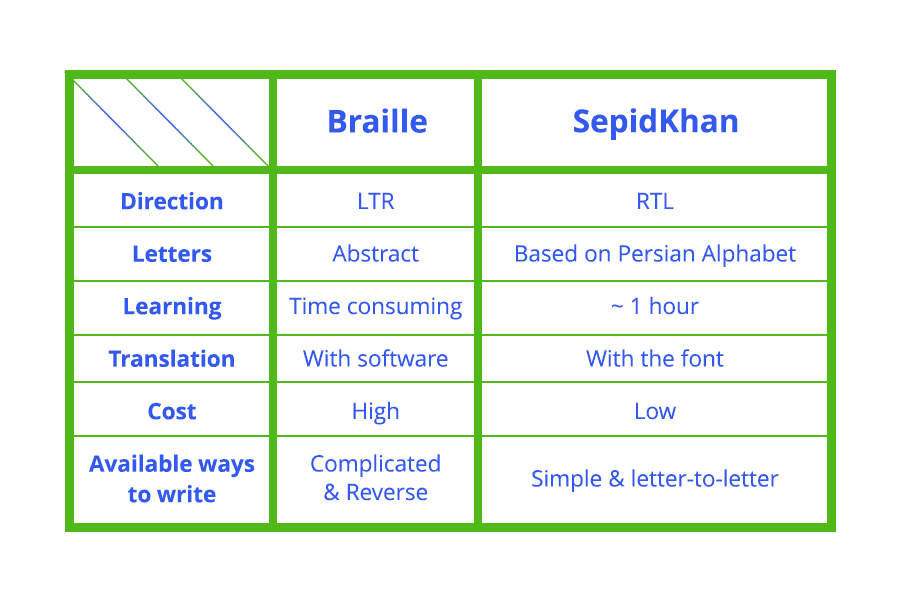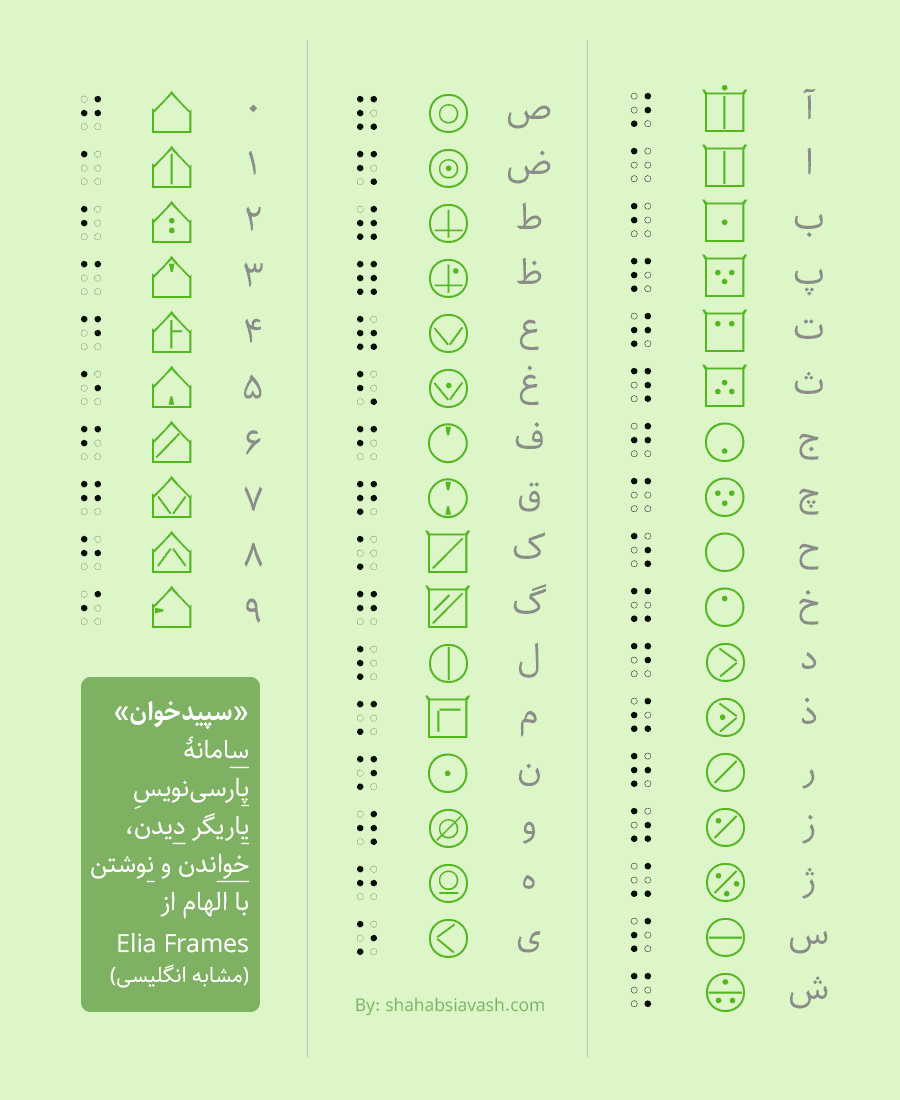After seeing the complexity of Persian braille and the great idea of Elia Life Technology for the English (Latin) braille, I have decided to do a Persian version of their work. I have contacted the CEO of Elia Life and I have sent some info, etudes and other stuff so maybe we could bring a Persian version of Elia to life. You see what I did there? :)
Also I am trying to do it in Iran in collaboration with the only Persian braille newspaper (Iran e Sepid) and some charities. Really appreciated if you comment on this as well.
But why an alternate?
You may get surprised to hear that we’re even considering to create an alternate for braille. Why should we do this? All the blind or visual impaired people are using braille and everything is ok. Wrong!
Braille is 200 years old and I’m actually surprised to find out no one did something about that. Something serious I mean.
Back to the first paragraph. Actually it is estimated that only 10% or less of the blind people can use braille! Why? Because it is very hard. Braille is based on some random dots, with no order or meaning whatsoever. So a blind person should memorize all of them and translate (or transliterate) them in their heads every time. For Persian it is worse, because it is backwards.
Another interesting statistics is only 1% of all blind or visual impaired people are born this way. Why this is important? Because about 99% of them has already seen their mother language alphabet at least once. So if we could have had a script somehow similar to the original alphabet they could learn it much easier than braille.

They did it!
Elia Life Technology did this after years of research and analysis. The letters are based on the Latin alphabet. They used something named ‘frames’ to make it simpler for the blinds to recognize the letters.
There are only 3 frames: Circular, Square and a house shape. They have explained it here letter by letter.
So I started form here. I have designed non-cursive Persian fonts before which I discussed about them here, so I thought it is something that I should do, if only there is 1% chance that it could be used someday.
I minimized the Persian letters based on the original alphabet using the frames as a help. You can see the letters and their equivalents in below pictures:

Dots!
Half of the Persian letters have dots. Dots is very important in Persian alphabet, because unlike Latin we have some groups of totally identical letters that the only thing that separate them from each other are their dots. Persian letters could have one, two or three dots.
So I thought we could minimize the letters that has dots to their dots with a little help from the ‘frames’.
We not only preserve the groups of similar letters by making them look-alike, but also make the learning experience easier, because you learn ب for example and you can read پ, ت and ث.
Advantages:
I named this new script “SepidKhan” (=ReadingWhite). Other advantages of using SepidKhan is the fact that it’s RTL, which makes translating and transliterating much faster and easier.
The next thing is the relation between blinds and their friends and families. People can’t read braille, even 90% of blinds can’t use braille, but this new script can be learnt in less than an hour and both can read it.
You can see some other benefits of using a script like this instead of braille:

Fonts or translators?
Braille can’t be used as a font. (I think it could be if only they didn’t make it much harder than it already is by adding grades and abbreviations and… Remember the 10%?) So even if a braille researcher, a teacher, author… wants to write some letters in braille (especially Persian) they have to use graphics or a braille translator.
But SepidKhan is a script and a font. And because it is not a different language with different grammar or vocabulary, it can do the translation by changing the font of a standard Persian text and everybody can write with it without the need to use a software/hardware. One could think of hundreds of books or articles that can be converted to a blind-friendly script by one click.
Important: There is no need to throw away braille for good! All those 10% that can use braille, will be using it for sure. I don’t think that a solution to help blinds to read and write should be always one thing and inevitably using Unicode braille patterns or some current hardware/software.
It is 21st century and braille was created in the 19th! Also there are a lot of scripts and typefaces, why blind people can’t have 2 scripts (sets of letters)?
And finally to write with this new script the Elia group came out with a Touch Printer and a Tactile Display. I hope if the Persian/Arabic version got finalized, Persians and Arabs could use those too.
So what do you think about Elia frames and SepidKhan?





